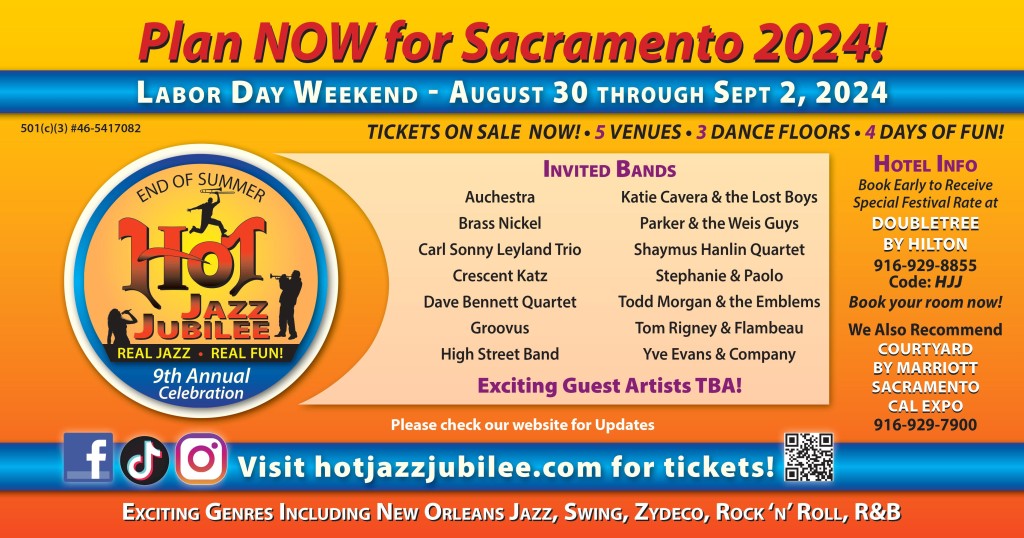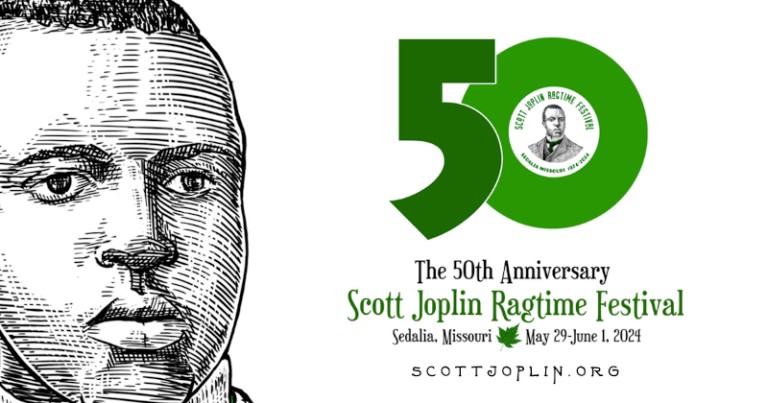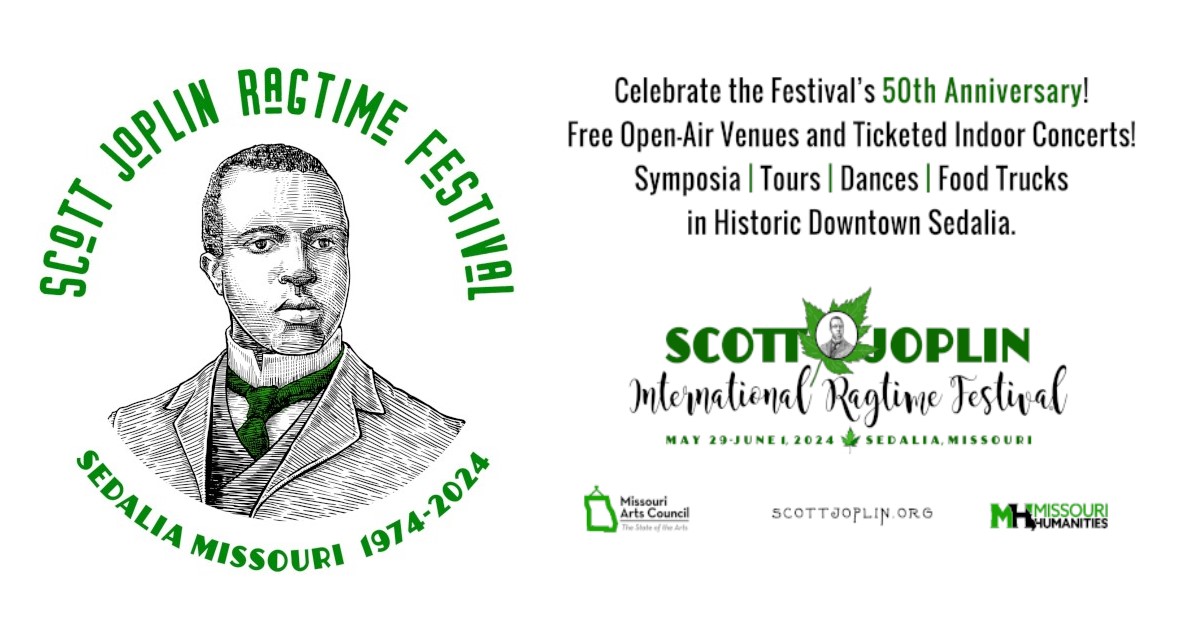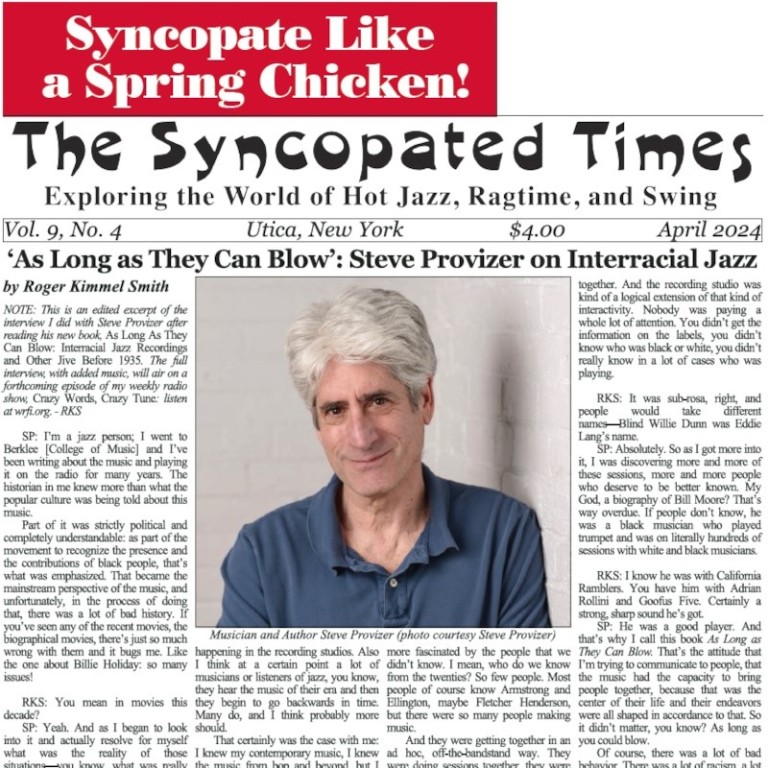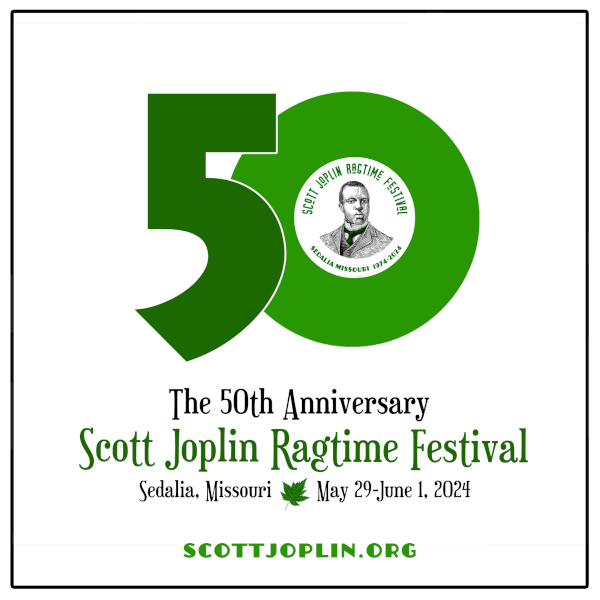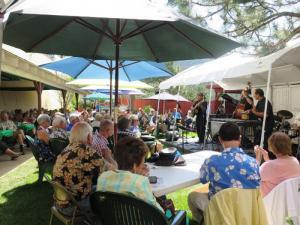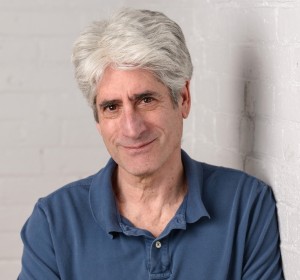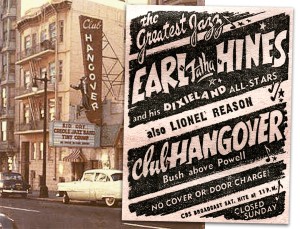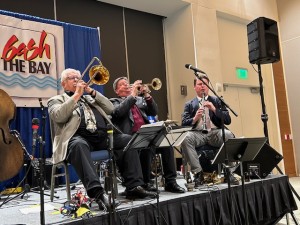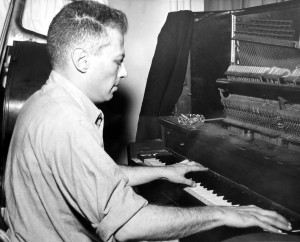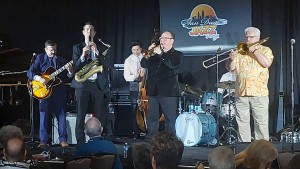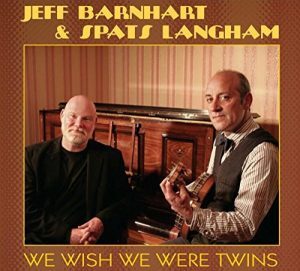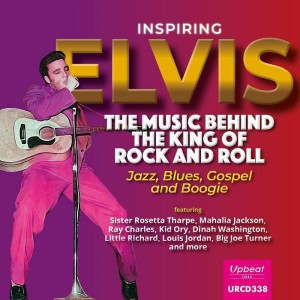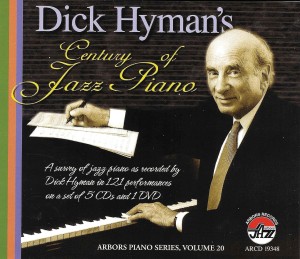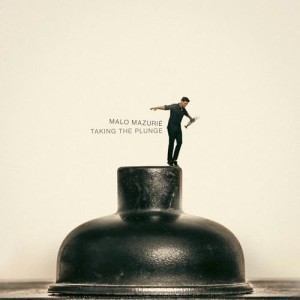He was the “Sentimental Gentleman of Swing,” a trombonist with perfect breath control, a pretty sound, and a melodic swinging style. Tommy Dorsey led one of the most popular bands in the swing world of the late 1930s/early ’40s and is still a famous name in jazz circles today.
Dorsey was also an occasionally mean drunk who was known to fire many of his sidemen if they had an off night. He had an erratic personality, loving a good fight but also being warm and generous much of the time, as long as things went his way.
Tommy Dorsey was born November 19, 1905 in Shenandoah, Pennsylvania, a little less than 21 months after his brother Jimmy. He was taught trumpet by his father who also gave lessons on the instrument to Jimmy. While TD would switch his main focus to trombone by the mid-1920s, he occasionally recorded on trumpet during that decade (although rarely in later years), creating a primitive but effective style that greatly contrasted with his smooth trombone.
Early Recordings
The Dorsey Brothers had parallel lives until they were nearly 30. They co-led Dorsey’s Novelty Six (later renamed the Wild Canaries) and the Scranton Sirens in the early 1920s, making their recording debut with the latter on two titles from May 1923. They were with Jean Goldkette’s orchestra in 1924 and TD recorded with Bix Beiderbecke in 1925 on “Davenport Blues” and “Toddlin’ Blues” with the Rhythm Jugglers. Other than being a member of Paul Whiteman’s orchestra during part of 1927-28, Dorsey worked as a studio musician during 1925-33, appearing on a countless number of recordings.
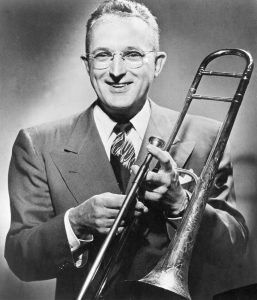 Dorsey’s trombone can often be heard in the ensembles and taking short solos with many overlapping studio orchestras and occasional jazz combos. During that era he recorded with such groups as the Varsity Eight, the California Ramblers, the Little Ramblers, Sam Lanin, Fred Rich, Henry Thies’ Castle Farm Orchestra, the Vagabonds, Ted Wallace, Hoagy Carmichael and his Pals, the All Star Orchestra, the Seven Blue Babies, Boyd Senter, the Alabama Red Peppers, Benny Goodman (as early as 1928), the Original Memphis Five, the Ipana Troubadours, the Mississippi Maulers, the Big Aces, Joe Venuti’s New Yorkers, Ben Selvin, Mills’ Merry Makers, Jack Pettis, Meyer Davis, Nat Shilkret, the Cotton Pickers, Willard Robison, Blind Willie Dunn’s Gin Bottle Four, and Napoleon’s Emperors.
Dorsey’s trombone can often be heard in the ensembles and taking short solos with many overlapping studio orchestras and occasional jazz combos. During that era he recorded with such groups as the Varsity Eight, the California Ramblers, the Little Ramblers, Sam Lanin, Fred Rich, Henry Thies’ Castle Farm Orchestra, the Vagabonds, Ted Wallace, Hoagy Carmichael and his Pals, the All Star Orchestra, the Seven Blue Babies, Boyd Senter, the Alabama Red Peppers, Benny Goodman (as early as 1928), the Original Memphis Five, the Ipana Troubadours, the Mississippi Maulers, the Big Aces, Joe Venuti’s New Yorkers, Ben Selvin, Mills’ Merry Makers, Jack Pettis, Meyer Davis, Nat Shilkret, the Cotton Pickers, Willard Robison, Blind Willie Dunn’s Gin Bottle Four, and Napoleon’s Emperors.
He also accompanied such singers as Seger Ellis, Emmett Miller, Annette Hanshaw, Ruth Etting, Ethel Waters, Libby Holman, Lee Morse, Chick Bullock, Buddy Rogers, Irving Kaufman, Roy Evans, Smith Ballew, Dick Robertson, the Sunshine Boys, the Boswell Sisters, Connee Boswell, Art Jarrett, Lee Wiley, Mildred Bailey, Baby Rose Marie, Red McKenzie, Bing Crosby, and even Mae West. This is only a partial list, not counting many anonymous studio and radio orchestras.
Dorsey Brothers Orchestra
It is not an understatement to say that Tommy Dorsey was pretty busy. However he was barely known to the general public. Some jazz fans heard of him due to the four titles he recorded in 1929 as a leader, playing trumpet along with a rhythm section. Others might have known of him because of the Dorsey Brothers Concert Orchestra, the Dorsey Brothers Novelty Orchestra, and the Dorsey Brothers Orchestra which were strictly recording groups during 1928-33 and produced some very musical performances that fell between jazz and dance music. But despite the lack of name recognition outside of the studio world, for the trombonist and his equally busy brother, there was no Depression.
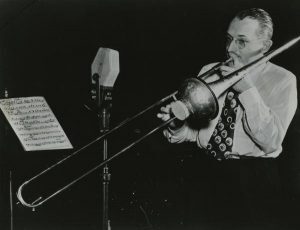 Still, both Dorseys had the urge to be leaders and to make names for themselves. In 1934 they organized the Dorsey Brothers Orchestra which, unlike its predecessor, was a regularly working big band. With trombonist Glenn Miller contributing many of the arrangements, Charlie Spivak on lead trumpet, fine drumming by Ray McKinley, and many vocals taken by Bob Crosby and Kay Weber, the Dorseys sought to balance swinging numbers with sweet ballads and dance music.
Still, both Dorseys had the urge to be leaders and to make names for themselves. In 1934 they organized the Dorsey Brothers Orchestra which, unlike its predecessor, was a regularly working big band. With trombonist Glenn Miller contributing many of the arrangements, Charlie Spivak on lead trumpet, fine drumming by Ray McKinley, and many vocals taken by Bob Crosby and Kay Weber, the Dorseys sought to balance swinging numbers with sweet ballads and dance music.
There were occasional guest spots from trumpeter Bunny Berigan, the band introduced “I’m Getting Sentimental Over You” (originally with a vocal by Bob Crosby), they had fun on “Annie’s Cousin Fanny,” and they were featured on the Bing Crosby recording date of Aug. 14, 1935.
But the public arguments between the brothers, who were dubbed “the battling Dorseys,” cast a cloud over the band and, just when the Swing era was beginning (with the great success of Benny Goodman), a fight on the bandstand over the tempo counted off of “I’ll Never Say Never Again Again’” resulted in Tommy immediately departing. Jimmy Dorsey inherited the big band while the trombonist soon took over the ailing Joe Haymes Orchestra and renamed it after himself.
While Jimmy Dorsey would struggle for years, success came relatively fast for Tommy Dorsey. He had learned from observing Paul Whiteman and other bandleaders the importance of balancing swinging jazz with commercial material and of playing his music at danceable tempos. Although he loved freewheeling jazz and played Dixieland-oriented music as a contrast, Dorsey’s repertoire always contained plenty of ballads, vocalists, and new material. He would stick to that musical path throughout his career.
On His Own
On their first of many recording dates for the Victor label (Sept. 26, 1935), the Dorsey band introduced singer Edythe Wright (who shared the vocals on “Santa Claus Is Coming To Town” with trumpeter Cliff Weston), swung hard on “Weary Blues,” and waxed a full-length instrumental version of their theme song “I’m Getting Sentimental Over You.” Two months later Dorsey had his first session with his Clambake Seven, an eight-piece Dixieland-oriented group taken out of the big band, featuring Edythe Wright on a hit version of “The Music Goes ’Round And ’Round.” It was a strong start for the trombonist.
Many musicians would pass through the Tommy Dorsey Orchestra including trumpeter Max Kaminsky, tenor-saxophonist Bud Freeman, and drummer Dave Tough in 1936. By then Jack Leonard had joined Wright as Dorsey’s main singers. But the real breakthrough was in 1937. The great trumpeter Bunny Berigan spent six weeks with Dorsey, contributing major solos to hit records of “Marie” and “Song Of India.” With the success of those two numbers, the Tommy Dorsey band was being mentioned at the same level as Benny Goodman’s. While Berigan did not stay long, his spontaneous solo on “Marie” was soon harmonized for the trumpet section and it would be performed on a nightly basis for the next two decades.
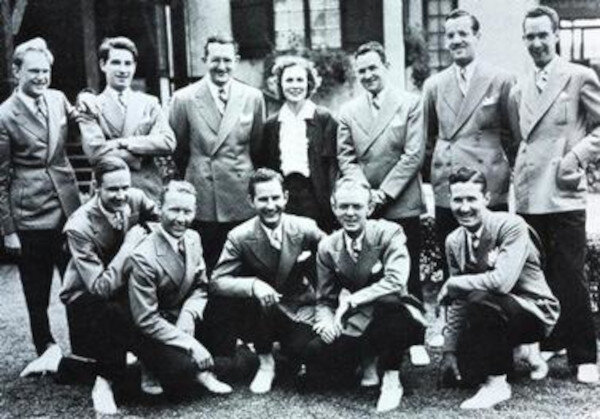
Trumpeters Pee Wee Erwin and Yank Lawson, and clarinetist Johnny Mince added to the jazz content of Dorsey’s band in the late 1930s, particularly with the Clambake Seven, and Dorsey had a big seller with “Boogie Woogie.” But in 1939 he felt that it was time for a change. Dorsey lured arranger Sy Oliver away from the Jimmie Lunceford Orchestra to give the group a more modern sound. The remarkable drummer Buddy Rich joined when Artie Shaw’s band broke up. Edythe Wright departed when Dorsey’s wife found out about their relationship. And Jack Leonard was succeeded by Harry James’ young singer Frank Sinatra. In addition, Dorsey began employing a vocal group, the Pied Pipers, that often teamed up with Sinatra and Jo Stafford. While Bunny Berigan’s return in 1940 only lasted a few months due to his alcoholism, practically everything else that Dorsey attempted was a success.
Whether it was vocal hits like “I’ll Never Smile Again” or swinging instrumental romps such as “Opus One” and “Well Git It,” Dorsey was at the top of his field. He and his band appeared in several Hollywood films including Las Vegas Nights, Ship Ahoy, Presenting Lily Mars, Du Barry Was A Lady, Thrill Of A Romance, and A Song Is Born, and he added such significant soloists as trumpeter Ziggy Elman, pianist Joe Bushkin, and clarinetist Buddy DeFranco plus singer Connie Haines.
When Sinatra departed in mid-1942, Dick Haymes proved to be an able successor. Even World War II and the musicians union strike of 1942-44 did not slow down Dorsey’s momentum. In fact, he prospered during those years. While Glenn Miller, Benny Goodman, and Artie Shaw broke up their bands, Dorsey added a large string section to his. When Buddy Rich joined the Marines, Dorsey hired Gene Krupa as a temporary replacement. The lack of recordings did not hurt much due to the endless series of radio shows, films, and concerts. When the Dorsey Orchestra was finally able to record again on November 14, 1944, they immediately had hits with “On The Sunny Side Of The Street” and his second version of “Opus One” (which included strings and featured DeFranco).
Post War Years
Though it seemed that it would continue forever, Dorsey’s success began to fade in the mid-1940s. The big band era was ending, bebop (which Dorsey hated) and rhythm & blues were beginning to have an influence on the music scene, dance halls were closing, and swing was starting to be thought of as World War II nostalgia rather than fresh new music. While Dorsey added trumpeter Charlie Shavers and (for a short time) pianist Jess Stacy to his huge orchestra (which at its peak in early 1945 included a 17-piece dance band plus 17 strings, harp, four French horns, tuba and oboe), the strings and the extra instruments were gone by the following year.
He still had a first-class band that included Shavers, Ziggy Elman, clarinetist Abe Most, tenor-saxophonist Boomie Richman, and several vocalists including Stuart Foster but the audiences were shrinking and the hits had stopped. Around the time that he and Jimmy co-starred in the fictional biography film The Fabulous Dorseys in 1946, he called it quits, at least for a little time.
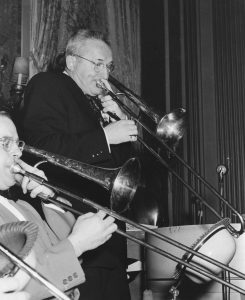 By mid-1947 Dorsey was back in the big band business, determined to bring back swing. Unlike most of the surviving big band leaders, he kept completely away from bop both in his soloists and the arrangements. Dorsey recorded many remakes of his hits, put the focus on his singers and, while including some Dixieland and instrumental swing pieces, put the emphasis on nostalgia.
By mid-1947 Dorsey was back in the big band business, determined to bring back swing. Unlike most of the surviving big band leaders, he kept completely away from bop both in his soloists and the arrangements. Dorsey recorded many remakes of his hits, put the focus on his singers and, while including some Dixieland and instrumental swing pieces, put the emphasis on nostalgia.
Drummer Louie Bellson was an asset to the band as were Shavers and Richman. Dorsey’s timeless ballad style and beautiful tone were unchanged from the 1930s so why should he change it? He may have been associated with the past, but Tommy Dorsey and his Orchestra were still surviving into the early 1950s, long after most of his contemporaries had given up trying to keep their big bands working.
Jimmy Dorsey’s big band had survived too but by 1952 he was struggling to keep it afloat. The hot-tempered siblings, who had made up a decade earlier, decided to join forces in a new Dorsey Brothers Orchestra, playing their hits, danceable swing standards, occasional jazz, and vocal features. Due to their stature as living legends, they were able to attract crowds and stay busy.
With Charlie Shavers as the featured trumpeter, Lee Castle playing lead, Louie Bellson on drums, and Lynn Roberts as the main singer, “the Fabulous Dorseys” were the hosts of the television series Stage Show during 1955-56. Their programs had many guests from the jazz and pop worlds including Elvis Presley at the beginning of his career.
One could imagine the Dorsey Brothers making it into the 1960s, playing endless remakes of their hits along with complementary swing tunes. After all, Tommy Dorsey was only 51 at his last birthday. But a week later, on November 26, 1956, having performed the previous night at the Hotel Statler with the band, he passed away from the combination of a heavy meal, alcohol, and sleeping pills. Jimmy Dorsey, who was already ill with cancer, only lasted a little more than six months, just making it to the age of 53.
While the music world may have gradually passed Tommy Dorsey by starting when he was 40, more than 60 years after his death the Sentimental Gentleman is still remembered and regularly praised for his tone and for the high quality of his best recordings.
